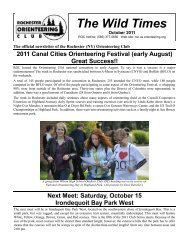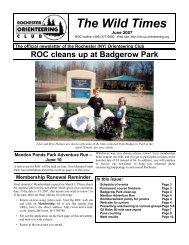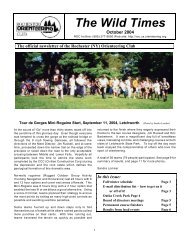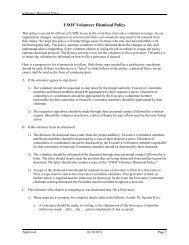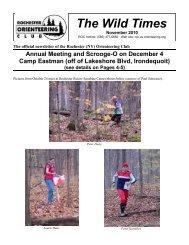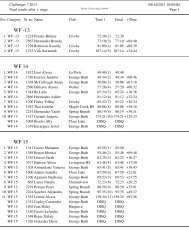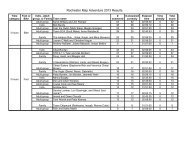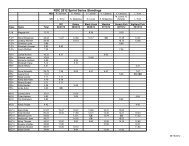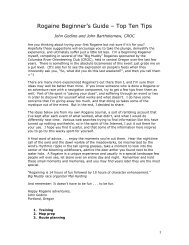A Rules for Foot Orienteering Events - Orienteering USA
A Rules for Foot Orienteering Events - Orienteering USA
A Rules for Foot Orienteering Events - Orienteering USA
You also want an ePaper? Increase the reach of your titles
YUMPU automatically turns print PDFs into web optimized ePapers that Google loves.
A.36.2.2 Interscholastic events may also include team classes as follows:<br />
z) Interscholastic Varsity Teams consist of 3 to 5 students who are<br />
competing in the ISVM and/or ISVF classes.<br />
aa)<br />
bb)<br />
cc)<br />
Interscholastic Junior Varsity teams consist of 3 to 5 students who are<br />
competing in the ISJVM and/or ISJVF class.<br />
Interscholastic Intermediate teams consist of 3 to 5 students who are<br />
competing in the ISIM and/or ISIF classes.<br />
Interscholastic Primary teams consist of 3 to 5 students who are competing<br />
in the ISPM and/or ISPF classes.<br />
A.36.3 Interscholastic Eligibility<br />
A.36.3.1 To be eligible to compete in an Interscholastic class the competitor must meet<br />
the grade requirements listed above and either be enrolled in a public or private<br />
school or be homeschooled.<br />
A.36.4 Technical <strong>Rules</strong><br />
A.36.4.1 Start intervals shall be no less than 2 minutes in accordance with the rules <strong>for</strong><br />
specific course <strong>for</strong>mats.<br />
A.36.4.2 Students from the same team or school on the same course shall be started a<br />
minimum of 6 minutes apart. Maximum separation of such students is<br />
recommended to reduce the temptation <strong>for</strong> collusion on the course.<br />
A.36.4.3 It is recommended that organizers plan separate courses <strong>for</strong> the Interscholastic<br />
classes. In the event that registered competitors fill up the maximum start<br />
window on a course, a separate course must be created <strong>for</strong> the Interscholastic<br />
classes.<br />
A.36.4.4 In the event the start window fills up even with a separate course, a one minute<br />
start interval or a qualifying system may be used.<br />
A.36.5 Scoring<br />
A.36.5.1 Scores <strong>for</strong> each race are computed as follows:<br />
dd)<br />
For each Individual Interscholastic class, define AWT (the average<br />
winning time) as the average of the times of the top three individual<br />
competitors in that class (<strong>for</strong> Championships use only times from Team<br />
Championship-eligible competitors). In the event that there are fewer than<br />
three eligible competitors with a valid time in any interscholastic class, the<br />
AWT shall be calculated as the average of the times of all eligible<br />
competitors with a valid time.



